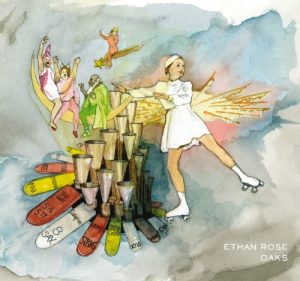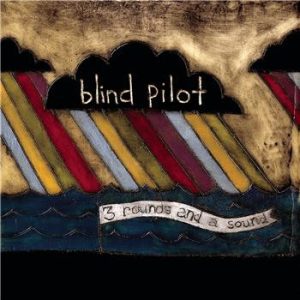 Oaks
Oaks
Ethan Rose
Holocene Music
The concept of “musique concrete” was first developed in the late ‘40s by a French composer named Pierre Schaffer. It was a natural outgrowth of the new technology of tape recording. The tape recorder allowed composers such as Schaeffer, and other composers of a like mind, to construct music out of pre-recorded snippets- not necessarily from a single source- altered with a variety of effects- to create sound collages that were hither-to unimaginable (except in the mind of Charles Ives, perhaps).
The music created within musique concrete is not so much a composition, in the historic meaning of the term- notated, linear music, with natural contours of melody and rhythm- as it is a construction of musical (and other) sounds, set forth in a musical manner- somewhat random and non-linear in structure.
Possibly the best example of musique concrete in recent popular music is the montage created by John Lennon (with the help of producer George Martin and engineer Geoff Emerick) for “Being For the Benefit of Mr. Kite” on the Beatles’ Sgt. Pepper album of 1967. He subsequently took the idea a step further with “Revolution #9” found on “The Beatles,” otherwise known as the “The White Album” released in 1968.
With the advent of samplers and other pieces of computer software, it has become easier for modern composers to create such music- some of which tends to fall in the “ambient” musical category- attributable primarily to the atmospheric quality of the finished result. But not all ambient music is musique concrete, nor is all musique concrete necessarily ambient in nature. But the two forms have much in common.
Which brings us to Ethan Rose. Ethan Rose is a local musician whose compositions tend to bridge the gap between musique concrete and ambient music. When Rose’s name came up, friend of mine said “oh I like what he plays.” I replied that I thought that he didn’t so much “play” music, in the typical sense of the word, as to gather and prepare it, to rebuild into a completely different form. This caused no end of perplexion.
But that’s what Rose does. It is impossible to tell (and truly, unnecessary to know) how much of the music Ethan Rose actually plays (if any) on this album and how much of it that he merely treats. Whatever the case- this album is a true work of art and will be an influential recording for many artists who will follow him.
It is fairly well known that Rose became enchanted with the historic pipe organ at the Oaks Park skating rink- a true throwback to another, less complicated, musical era. Pipe organs were more or less the synthesizers of their day- reproducing any number of various instruments (though, in many cases, not very well), allowing a single individual to act as an entire symphony orchestra. That idea is not new. JS Back wrote incredible pieces for the pipe organ. In many of his compositions, the foot controlled bass pedal requires of the player that he dance a veritable jig in accompaniment.
The organ at the Oaks is a 1926 Wurlitzer, one of the better known contemporary organ manufacturers. It is a theatre pipe organ, not necessarily a liturgical organ that you might ordinarily find in a church. The current Oaks Park organ was installed in 1955. There have been several celebrated organists in Oaks Park’s history. Keith Fortune is one of the current organists. He provides the source material for Ethan Rose’s flights of fantasy.
And such flights they are! They are actually pieces of musique acousmatique- which I am not going to explain here. Look it up. The idea though is that it becomes difficult to tell of what source the created music is comprised. That is oftentimes the case here. So, what exactly Ethan plays here, if anything, besides effects pedals and a computer mouse, is difficult to ascertain. But the results are splendid, indeed.
These roller rink organists are a dying breed (as are roller rinks themselves). Many of the organists were long ago replaced by sound systems- blaring the current hits of the day. But if you want to know what good roller rink organ sounds like, watch this:
https://www.youtube.com/watch?v=FKUE31r0qs8&list=PLMt6dJRoOw1oWUOrdDfGZ3uss-Lrco8Q5&index=7
So what does Ethan Rose’s music sound like? Well first we should define what it doesn’t sound like. It does not sound like the old roller rinks (such as in the link). There is a possibility that Ethan has sampled one or more of these songs or others comparable, but that is impossible to say. Another interesting album might be Ethan (and organist Keith Fortune) releasing the original tracks from which these cuts were culled and reassembled. There is no way of identifying the originals in their new form.
No, Ethan Rose’s musical pieces are inscrutable, other worldly- composed of water, smoke and the ether. They drip and waft and hover. They go nowhere- though they go somewhere. But no place you’ve ever been before (except, possibly, in your dreams). Ineffably indistinct. Vaporous.
“On Wheels Rotating” works from simple percussive hammer hits, with shimmering drones- like something Sigur Ros might develop; then moves to a more melodic section, which proceeds more or less linearly- though nowhere in particular. Parts of this section sound like snippets of “Silent Night.” the third section reverts to a very pretty, misty conclusion.
Working from a humming pedal point, “Rising Waters” trickles and flows like rain into puddles on an Oregon winter’s day. Random clicks and clacks and swirls mingle with melodic foghorns in the musical haze. Hypnotic. Somewhat more muscular, though no less mesmerizing, “Grand Marcher,” satellites through expansive skies, like a comet in the endless sonic cosmos- the sound of air passing over gigantic bottles.
The chimey “The Floor Released” moves haltingly in no direction in particular- like a music box slowly losing its momentum. Ghostly gasps punctuate the windless breath of all time melting down to zero, to renew again in endless space. “Fortunate” is a cheeky pun- regarding the organist’s name: one would suppose. A hymnal pall is cast- as if the marriage of air and water were forming earth, or some other such grandiose cosmic event were transpiring.
Clattering and clanging, “Scenes from When” sounds as if it has a guitar playing single notes above the mechanical industrial whir of the treadmill bed of sound. Certain sections here (and elsewhere) sound as if they are unreeling backwards, from end to beginning, in some alternative musical universe.
The bell-like tones of “Mighty Mighty” call to mind Salvation Army Christmas ringers, with a haunting clarity- punctuated with subtle tympanic explosions in the distance. Vaguely melodic in a charmingly unfettered way- like a musical slinky tumbling down a flight of stairs. Finally, “Bottom” starts off sounding like a musical garbage can tipped over in an alley, before resolving into plaintive jingle bells above a snowy panorama of thematic wonderment.
This is certainly not music to play at your next rave. The textures here are dreamy, the tempos are dirge-like. But there is no doubt about the inexpressible compositional beauty that Ethan Rose has developed in the eight tracks found (with an accent on “found”) here. This is not like anything you have ever heard before. It is music to fall asleep by- perchance to dream. It is the music of heaven unfolding like a fluffy cotton jack-in-the-box. It is the sound of one hand clapping.


